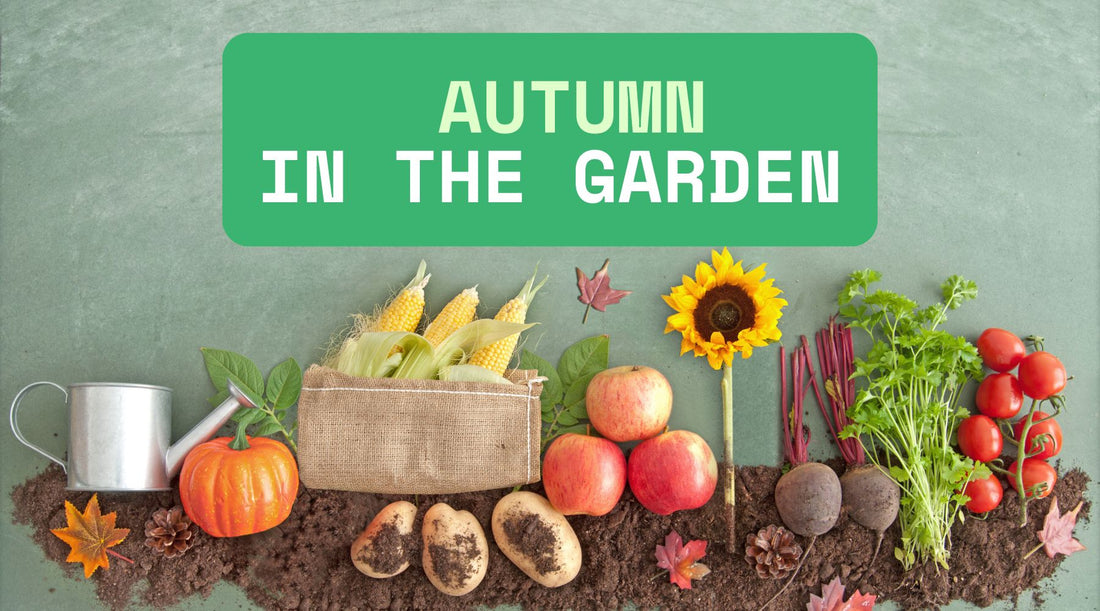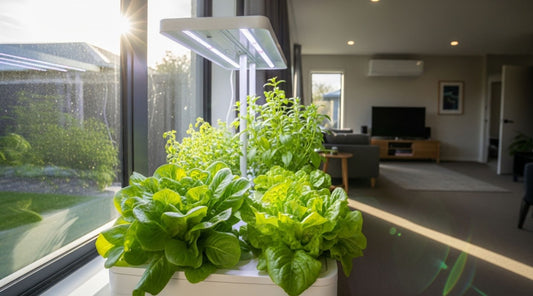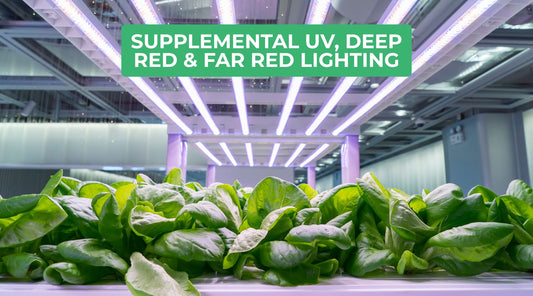
Autumn in the NZ Garden: Your Sensational Season Guide
Share
Hey there, fellow gardener! As summer's warmth fades and the air gets crisper, our gardens prepare for an exciting shift. Autumn is actually one of the most rewarding seasons in the garden - perfect for tackling tasks after the summer heat, planting for continuous harvests, and setting up delicious crops that'll feed you well into winter.
After a productive summer, your soil has worked hard and those summer crops are winding down. It's the perfect time to refresh and prepare your garden beds for cooler weather ahead. Let's dive in and make the most of this beautiful season!
Giving Your Soil Some Much-Needed Love

Think of your soil as your garden's engine - after powering those hungry summer plants, it needs refueling. Here's how to restore nutrients lost during the heavy summer growing season:
Essential Soil Preparation Steps:
- Add Organic Matter: Work in plenty of well-rotted compost, sheep pellets, blood and bone, or chicken manure. These improve soil structure and plant health whether you're planting in garden beds or containers.
- Aerate and Loosen: Break up compacted soil with a fork or cultivator to improve drainage and help roots spread easily.
- Apply Slow-Release Fertilizer: Use organic fertilizers like Tui Performance Organics pellets, which feed plants for up to three months and boost root development. Apply every 6-8 weeks to give existing crops a boost.
- Consider Green Manure: Sow cover crops like lupins and mustard in vacant spaces. Let them grow for 6+ weeks, then chop and fork them into the soil for natural nutrients.
- Balance pH: Test your soil and adjust with lime (to reduce acidity) or sulfur (to increase acidity). Most vegetables prefer slightly alkaline conditions.
- Mulch for Protection: Apply fresh organic mulch like pea straw to retain moisture, regulate temperature, suppress weeds, and protect from cooler weather.
What to Plant for Autumn & Winter Harvests

Autumn planting means fresh harvests well into winter! Here are the top performers for cool-season growing:
Cool-Weather Champions:
- Leafy Greens: Spinach, kale, lettuce, silverbeet, and Asian greens (Chinese cabbage, bok choy, gai lan, choy sum, tatsoi)
- Root Vegetables: Beetroot, carrots, radish, swedes, turnips
- Brassicas: Broccoli, cabbage, cauliflower, Brussels sprouts (benefit from protective covers)
- Alliums: Leeks, onions, spring onions, garlic
- Legumes: Broad beans and peas (broad beans actually enrich the soil!)
- Other Vegetables: Celery, Florence fennel
- Herbs: Coriander, parsley, thyme, sage, hyssop
Planting Tips:
- Start seeds in trays for better control over moisture and warmth
- Allow extra time when growing from seed vs. buying seedlings
- Acclimatize seedlings to cooler temperatures before transplanting
- Give plants adequate space to reach mature size

Smart Companion Planting:
- Carrots + Leeks: Their scents repel each other's pests
- Sage + Celery: Sage keeps aphids away
- Hyssop + Brassicas: Deters white cabbage butterfly
- Calendula: Attracts beneficial insects like hoverflies and ladybirds
Don't forget flowers! Plant calendula, alyssum, pansies, violas, marigolds, and spring bulbs now for continuous color.
Harvesting and Storing Your Autumn Bounty

Autumn is peak harvest time! Regular picking promotes continued growth throughout the season.
Ready to Harvest:
- Vegetables: Beans, beetroot, broccoli, cabbage, capsicum, cauliflower, celery, courgette, cucumber, eggplant, lettuce, potatoes, pumpkin, sweetcorn, tomatoes
- Fruits: Apples, apricots, blueberries, grapes, feijoas, passionfruit, peaches, pears, plums, strawberries
Storage Tips for Maximum Freshness:

- Root Vegetables: Trim greens, store in breathable containers in cool, dark areas. Don't wash until ready to use.
- Tree Fruits: Keep in cool, dark places or fridge fruit drawer. Ripen pears in paper bags with apples or bananas.
- Pumpkins: Ensure they're dry, store in well-ventilated areas at 10-15°C. Don't stack to prevent bruising.
- Leafy Greens: Eat fresh or store in fridge wrapped in damp cloth.
- Garlic: Cure by hanging in well-ventilated area, then store in cool, dry spot once dried.
Managing Autumn Garden Pests

As seasons change, so do garden pests. Some summer pests linger while others like aphids and white butterfly caterpillars surge in autumn.
Common Autumn Pests:
Sucking Insects (feed on plant sap):
- Aphids: Cluster on new growth. Blast off with hose or treat with organic sprays
- Mealybugs: White powdery coating, peak in autumn/spring
- Whitefly: Peak in March, cause yellowing and stunting
- Spider Mites: Prefer hot, dry conditions of early autumn
Chewing Insects (eat foliage and stems):
- Caterpillars: Cabbage white butterfly and diamondback moth are main autumn culprits
- Slugs & Snails: Most active on cool, wet nights
- Carrot Rust Fly: Larvae tunnel into roots, highest populations in autumn
Organic Control Methods:
- Manual removal of eggs and larvae
- Fine insect netting to prevent egg-laying
- Organic sprays like Nature's Way products
- Encourage beneficial insects with companion plants
- Regular mulching to suppress pests and weeds
General Autumn Garden Maintenance

Essential Autumn Tasks:
- Feed Regularly: Apply organic seaweed tonic every 2-4 weeks to boost plant resilience against frost, pests, and diseases.
- Protect from Frost: Use cloches, growing tunnels, or protective covers for young seedlings. Water in the morning if frost is expected - moist soil retains heat better.
- Mulch and Support: Fresh mulch protects roots from temperature swings. Stake taller plants like dahlias and sweet peas.
- Prune and Tidy: Remove spent flowering plants and prepare garden beds for winter.
- Water Wisely: Prioritize young and fruiting plants. Morning watering helps if frost threatens.
- Save Seeds: Harvest and properly label seeds from this season's best performers for next year.
Wrapping Up: Your Autumn Action Plan

Autumn gardening is incredibly rewarding - it's your chance to transition from summer favorites while setting up months of cool-weather harvests. By preparing your soil now, strategically planting diverse vegetables and herbs, properly harvesting and storing your bounty, staying ahead of pest issues, and maintaining protective measures, you'll enjoy fresh, homegrown produce throughout the cooler months.
Don't let summer's end mean your garden's end! Embrace the crisp air and set your garden up for a sensational autumn season. Happy gardening!
Ready to plan your garden year-round? Dive deeper into seasonal tasks and discover expert tips for every month with our comprehensive [Month-by-Month NZ Gardening Guide]



